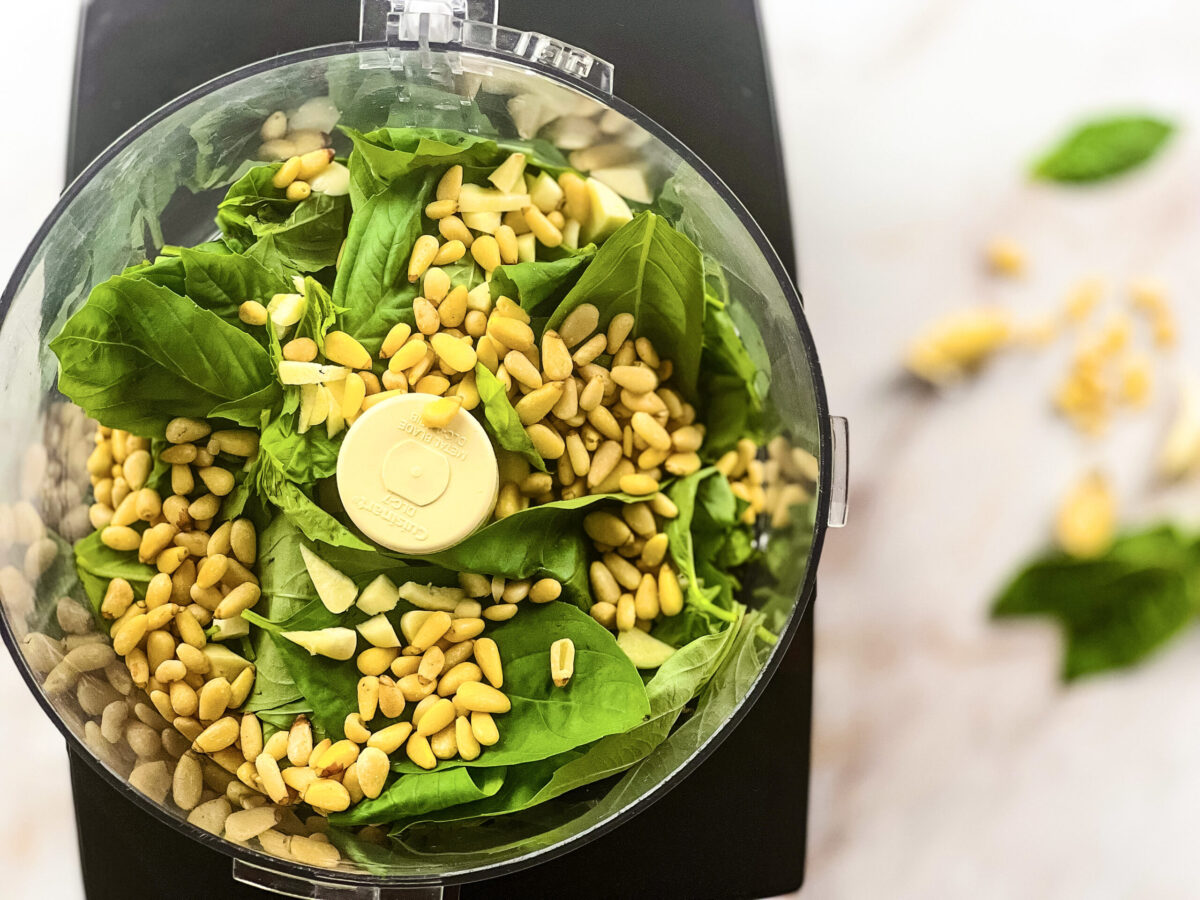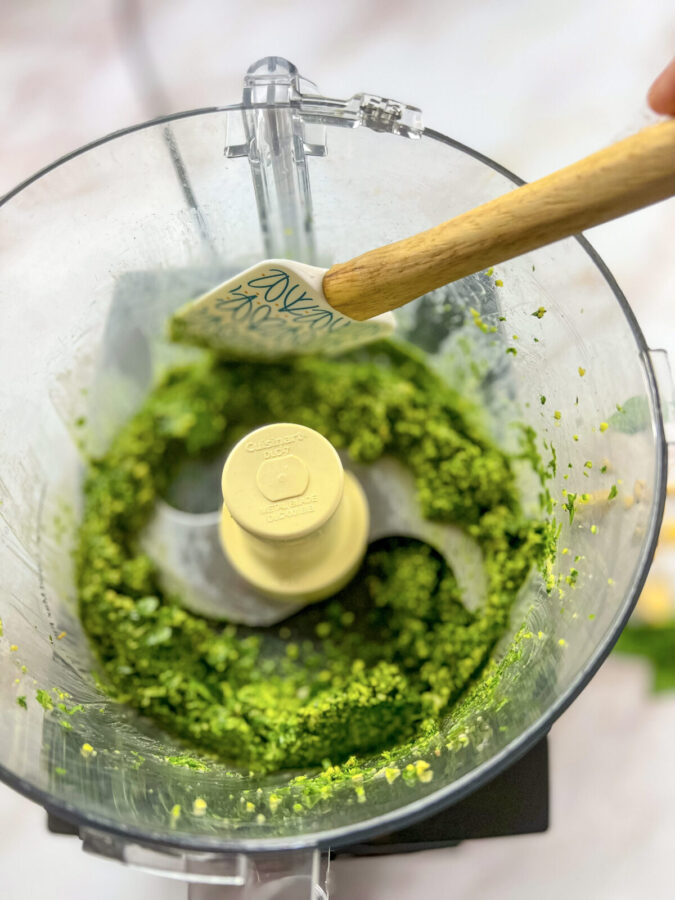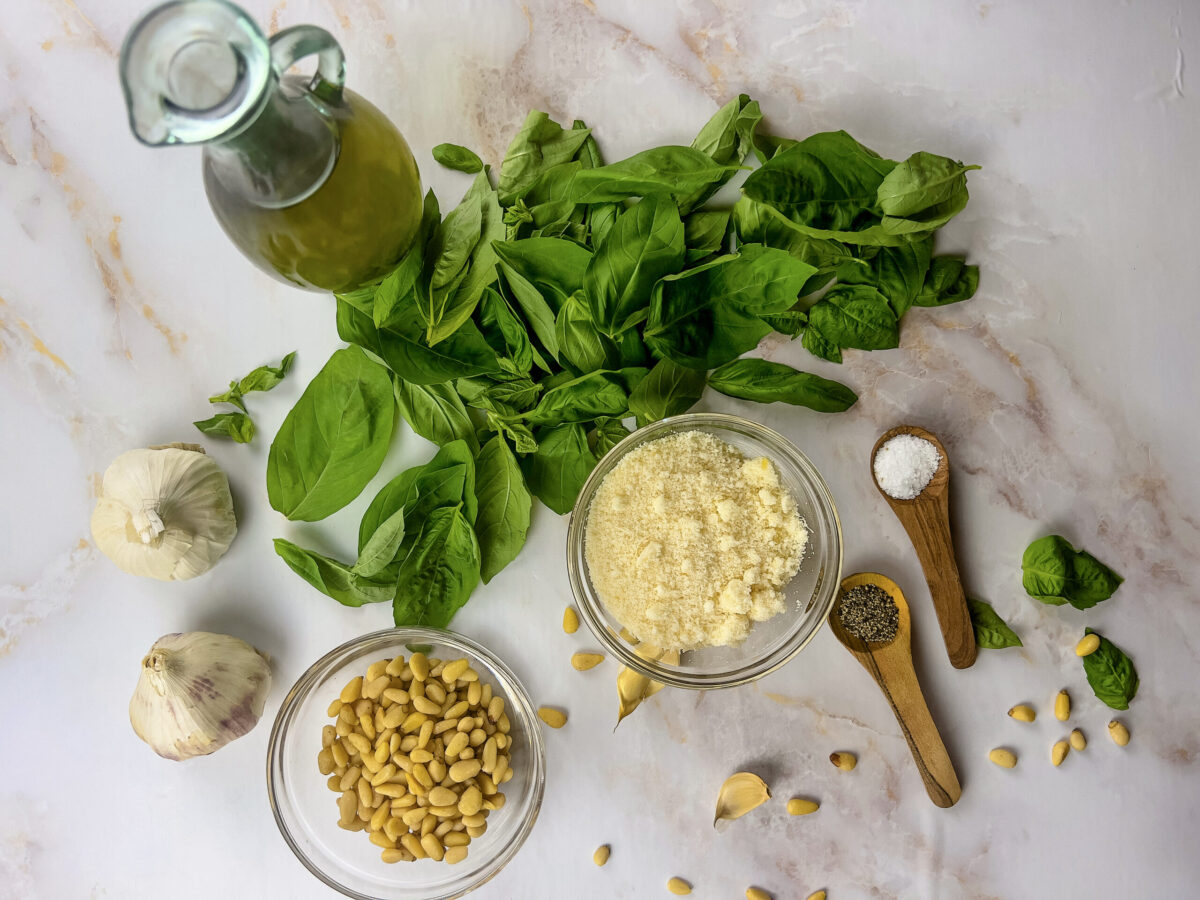Ready to bring the true flavors of Italy into your kitchen? This fresh pesto recipe is authentic, creamy, and incredibly easy to make. Join me, and let’s create something delicious together!
Fresh pesto recipe enthusiasts, you’re in for a real taste of tradition. During a visit to Genoa, Italy—the birthplace of pesto—I saw firsthand how much pride the locals take in this creamy, flavor-packed sauce. Whether spread generously on warm focaccia or tossed with pasta, pesto in Genoa is rich, aromatic, and never skimped on.
This fresh Genovese pesto recipe brings that same heart and flavor to your kitchen. Made with Genoese basil, garlic, pine nuts, Parmesan, and olive oil, it’s a simple blend that’s big on taste. While store-bought options exist, nothing compares to the texture and brightness of homemade pesto—ready in just five minutes.
Rooted in 13th-century Ligurian tradition, pesto (from the Italian pestare, “to crush”) isn’t just a sauce—it’s a celebration of fresh ingredients and heritage. With this version, you’ll experience why it’s a staple that Italians—and now you—can’t live without.
Fresh Pesto Recipe Ingredients
- Pine Nuts (Slightly Toasted): Introduce a nutty and earthy undertone, providing depth to the pesto.
- Basil Leaves (Cleaned and Dry): The star of the show, fresh basil leaves bring a bright, aromatic, and herbaceous flavor to the pesto.
- Garlic Cloves (Roughly Chopped) Add a pungent and savory kick, enhancing the pesto’s overall robustness.
- Extra Virgin Olive Oil (Good Quality): This smooth and luscious binder gives the pesto a fruity and rich flavor.
- Fresh Parmesan Cheese: Grated Parmesan cheese adds a salty and savory note, enhancing the umami flavor of the pesto.
- Salt and Black Pepper: To taste, these seasonings balance and elevate the flavors, providing the perfect savory kick.
The Versatile Uses of Pesto Sauce
Pesto sauce’s adaptability is unmatched. It effortlessly enhances pasta, gnocchi, and lasagna or gives your minestrone a flavorful boost. Pesto also works wonderfully as a marinade for fish and chicken and adds a delightful twist to fried eggs. Plus, it’s the secret ingredient that elevates many Caprese sandwiches, giving them their unique taste.
Keeping Your Pesto Fresh
A less-than-pleasant encounter with bitter pesto often stems from over-processing in a food processor. As the blades spin at high speeds, they heat the basil, causing it to oxidize and develop a bitter flavor. Avoid this by adopting a careful and gentle processing approach.
- Fresh is Best: Always use fresh basil for your pesto. Aging or wilted leaves can often result in a bitter flavor. Choose basil leaves that are bright and green, without any dark spots or yellowing. Blanch Your Basil: Blanching your basil leaves in boiling water before an ice bath can help maintain the bright green color and reduce bitterness. While this step is optional, it can make a significant difference.
- Pulse, Don’t Process: Use the pulse setting on your food processor for better control over the consistency. This helps to avoid overheating the basil and preserves its fresh, sweet flavor.
- Love the Lumps: Embrace the rustic charm of homemade pesto. It’s perfectly acceptable for your pesto to be chunky – some visible pieces of basil can enhance the texture and retain the vibrant sauce’s true essence.
- Traditional Approach: If you have the time and want to follow tradition, use a marble mortar and wooden pestle. While this method may be more laborious, it prevents overheating and results in a beautifully textured and flavor-rich pesto.
Step-by-Step Instructions
Blend the Base

Add Cheese & Season


Add the Olive Oil

Adjust & Store

Ingredients:
| ⅓ cup pine nuts | |
| 2 cups basil leaves (cleaned and dry) | |
| 3 garlic cloves (roughly chopped) | |
| ½ cup extra virgin olive oil | |
| ½ cup parmesan cheese | |
| ½ teaspoon salt | |
| ½ teaspoon black pepper |
Preparation
Add the cleaned basil leaves, garlic, and pine nuts to a food processor. Blend for about 2 minutes, until finely chopped and well combined.
Scrape down the sides of the food processor, then add the Parmesan cheese along with a pinch of salt and black pepper. Pulse until everything is evenly incorporated.
With the food processor running, slowly drizzle in the olive oil through the top opening. Continue blending until the pesto becomes smooth and creamy.
Taste your pesto and adjust the salt or pepper if needed. Transfer to a clean glass jar and store in the refrigerator—it’ll keep fresh for up to a week.
Recipe Tips & Suggestions
Quality Ingredients:
Basil Handling:
Toasting Pine Nuts:
Freezing Pesto:
Pesto Uses:
Allergy Note:
Vegan/Dairy-Free Variation:
Seasoning Tip:
Nutrition Information
The information shown is an estimate provided by an online nutrition calculator. It should should not be considered a substitute for a professional nutritionist's advice.
See our full nutrition disclosure here.









I’d love to hear about your pesto-making adventure! Please leave a comment below sharing your experience or any variations you tried. Your feedback helps us and our community of readers!